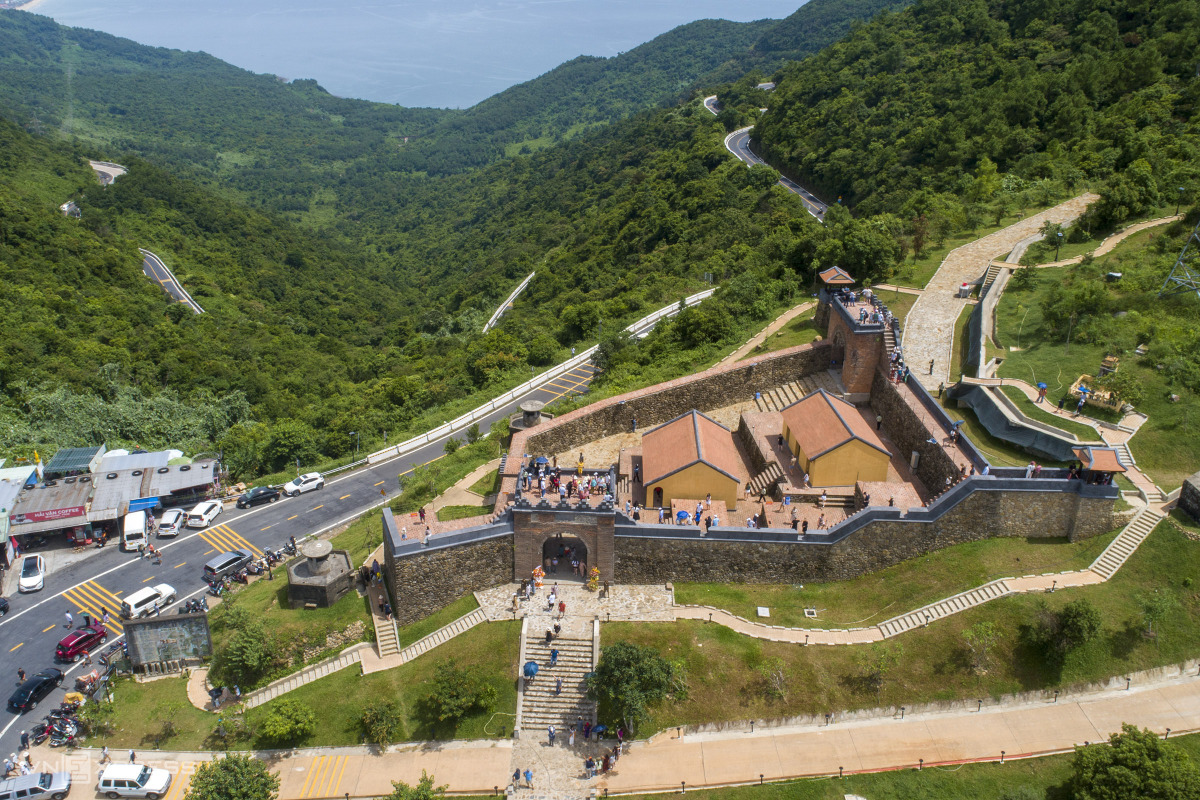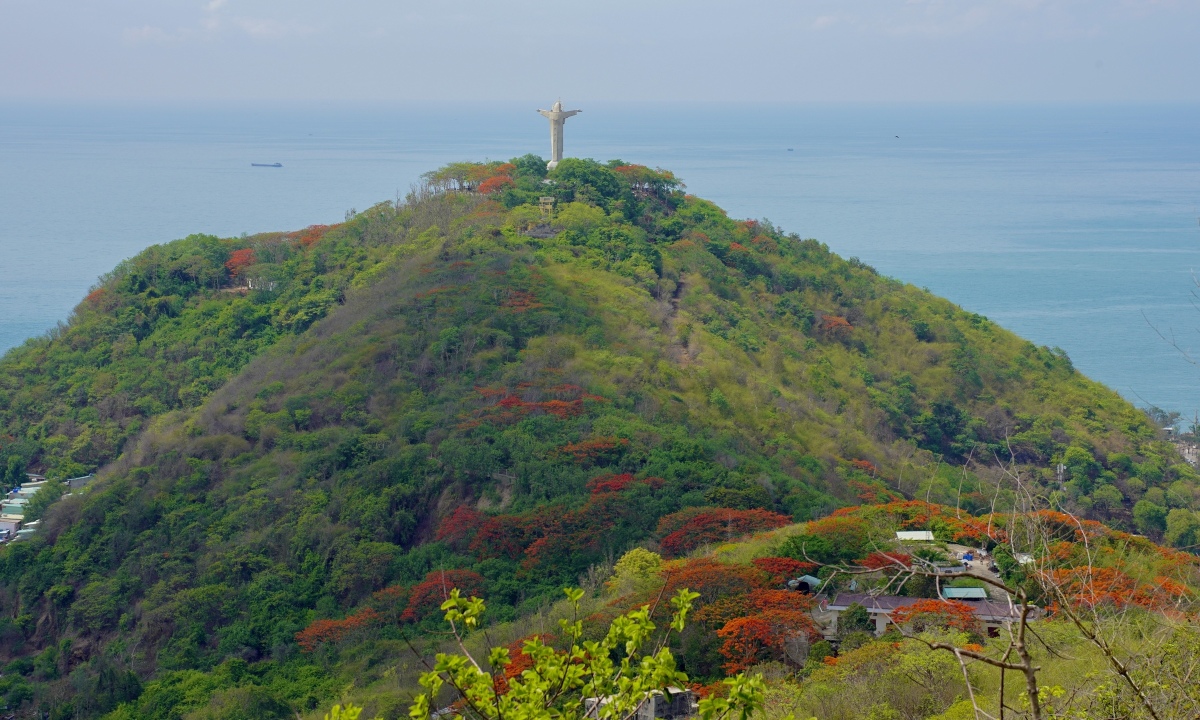Tourists flock to Hai Van Gate during reopening day

Located on the top of Hai Van Pass between Thua Thien Hue Province and Da Nang City, the nearly 200-year-old relic, built under the Nguyen Dynasty, was jointly restored by the two localities from late 2021.
It was constructed in 1826 during the reign of King Minh Mang (1791-1841), who ordered the construction of several defensive structures along the pass to protect the imperial capital of Hue.
The gate used to be dubbed as the "pharynx" of Hue Imperial Citadel.
However, it stood abandoned for over 20 years (second photo) until 2017, when the government recognized Hai Van Gate as a national relic, prompting authorities in Hue and Da Nang to join hands for a major renovation project.
In the first photo is Hai Van Gate after completion of restoration looking north.

On Thursday, Aug. 1, the relic was reopened for free.
Many domestic and foreign tourists went to the peak of Hai Van Pass from the early morning, waiting to visit the relic after restoration.
The Hai Van Gate is about 490 meters above the sea level.

Stone walls exposed to sun and rain for a long time are covered with moss, creating an ancient look.

The main office that used to provide accommodation for the soldiers stationed there, is located right behind the main gate of the relic.
It has been restored based on archaeological traces and photos. The building features brick walls, wooden pillars with stone bases, and tiled roofs.

Behind the main office is the three-room armory where weapons used to be stored and preserved.
Dao Thi Trang Nhung, 25, from Quang Nam, said that ancient architecture is found in many places, but Hai Van Gate is a place where you can see both Thua Thien Hue and Da Nang.
"This is a tourist spot for both middle-aged and young people," said Nhung.

Visitors move up the stairs leading to the highest watchtower. Security guards must set up barriers to limit the number of people in order to avoid affecting the relic.
The stairs are fenced with steel wire, and there are also warning signs of "dangerous area" for visitors to pay attention when moving.

Inside the main office are Vietnamese and English descriptions about the relic for visitors to learn before visiting the entire structure.
In the near future, these signs will be equipped with QR codes in many languages for visitors to easily look up.

A group of tourists from Spain visit the Hai Van Gate on Aug. 1. The group spent time walking around the entire relic site, looking out towards the Da Nang sea and Lang Co Bay.
Manuel, a member of the group, said he was very surprised when a relic hundreds of years old was restored almost intact and on a large scale so that tourists could visit and learn about history.
"This place creates an ancient space that allows people to admire the entire view of Da Nang sea or Hai Van mountain pass. Both are very majestic. We really like this destination," said Manuel who holds his phone to take group photos (pictured).

A foreign tourist takes photos of the stone wall at the relic.
Recently, many groups of tourists have visited the relic but it had not been reopened yet so they can only admire it from outside.

The Hai Van Gate from above, overlooking the entire city and Da Nang bay.
It used to earn the title "First Grand Gate of the World" as bestowed by King Le Thanh Tong, who reigned from 1460 to 1497, known for his focus on education, military successes, cultural support, and economic growth, making him one of Vietnam's greatest emperors.












.png)

